Multi-Criterion Spatial Optimization of Future Police Stations Based on Urban Expansion and Criminal Behavior Characteristics
Abstract
1. Introduction
2. Case Study and Methodology
2.1. Overview of Research Region
2.2. Methodology
2.2.1. Types of Police Station Areas
2.2.2. Land Expansion Strategy
- (1)
- Land Use Classification
- (2)
- Prediction of Future Land Use
- (a)
- Input land use development potential drivers and remote-sensing classification data. The development potential drivers data include land use, socioeconomic drivers, and climatic and environmental drivers (Table 2). Managed-land-use-driven shaded raster files have a uniform resolution of 30 m due to the capabilities of the model calculator. Training using random forest classification so that quantitative information on how various drivers influence the expansion of multiple land use types is directly provided. Considering that the driving force of land use change may change with time (i.e., the change of driving factors), the transfer rules obtained in the training process are more valuable and more flexible than the allocation rules mined in the past. Because the transition rules in this study are time dependent, they can describe the nature of land use change in a specific time interval [46]. This advantage can help policymakers understand how drivers (e.g., the growth of arterial roads) affect short-term land use change. Therefore, the model produces more reliable simulation results for different scenarios in the future. Spatial layout is mainly influenced by topography, the natural environment, markets, government public facilities, water resources, cities, and other spatial factors [47,48,49,50]. So, based on previous studies and the current situation of the study area, we selected 3 evaluation criteria and 12 sub-criteria for the impact factors. Driving factors collected from different time periods are allowed [51], but we made the time periods of the driving factors as close as possible to the time periods of the land use data.
- (b)
- Setting of the restricted area. According to the actual situation of the study area and the ecological function of protected areas, museums, roads, and zoos are selected as restricted areas, and conversion to other types of land use is prohibited.
- (c)
- Calculate the future land demands. Based on the collected remote-sensing image data, this study uses the Markov model to calculate the future land use situation.
- (d)
- Set the transition matrix and neighborhood weights. Consider the impact of factors such as laws and policies and identify the type of land to be converted in the initial layer (refer also to the transition matrix). Neighborhood weights are assigned according to the normalized value of land expansion from the previous stage:where is the domain weight of land use type i, is the expansion area of land use type i, is the minimum expansion area of all types of land use, and is the maximum expansion area of various land use types.
2.2.3. Global Moran’s Index
2.2.4. Analytic Hierarchy Process
- i.
- Calculate the maximum eigenvalue of each comparison matrix.
- ii.
- Calculate the consistency index (CI) value by usingwhere is the maximum eigenvalue of each comparison matrix, and n is the number of criteria or order matrix A.
- iii.
- Use Table 5 and the number n of standards used to obtain the random consistency index (RI) and then determine the CR by calculating the ratio of the CI to the RI:
2.2.5. Location Allocation Standard and Model
- (1)
- Location Allocation Standard. Before selecting a site, a preliminary analysis of the geospatial environment must be performed. The preliminary analysis is mainly divided into three parts, the details of which are shown below.
- (i)
- The NSCAs are selected. The impact of actual land use, such as protected areas, museums, roads, and zoos, is considered. Therefore, NSCAs are selected, and the unsuitable areas in the original layer are erased. The data for the protected area are obtained by interpreting remote-sensing images. The road network data come from OSM and, based on the monitoring data of Lanzhou’s geographical conditions, the original data are preprocessed by checking, editing, and modifying the topological relationship to obtain the final road network data. The road data contain a total of 12,818 nodes.
- (ii)
- The PCAs are selected. The suitability of undeveloped areas is evaluated by considering the main tasks of (a) potential crime hotspots, (b) socioeconomic drivers, and (c) orography. Finally, the PCAs are found through an analytic hierarchical process and a weighted linear combination model. The assessment criteria are as follows:
- (a)
- Potential crime hotspots. Potential crime hotspots reflect the level of danger of crime during a certain period. Police stations represent the deterrent forces, which can be static (police stations) and/or dynamic (police patrols). In 2019, the crime of stealing and fraud remained the top two criminal case categories. However, the fraction of stealing cases declined, and the fraction of fraud cases increased. The crime of “two robberies and one theft,” that is, the crime of robbery, the crime of stealing, and the crime of forcible seizure, is characterized by repeated occurrence and directly and seriously affects people’s lives and productivity. The report “China’s Blue Book on Criminalization” pointed out that economic and property-related cases have become problems in criminal governance. In particular, cases of property violations using various emerging technologies and technological means tend to expand their influence. The crime governance data of some provinces and cities indicate a unique phenomenon. For example, in the Guangxi Zhuang Autonomous Region, the number and proportion of crimes against the public (6050) and drug cases (4514) are relatively high. Therefore, we select the crime of stealing, drug trafficking, fraud, forcible seizure, and robbery in the central urban area of Lanzhou as the research sample. The crime data come from the 2014–2016 criminal judgments of public prosecutions published by China Judgment Documents Network and include 1887 thefts, 1405 cases of drug trafficking, 124 frauds, 24 robberies, and 99 cases of stealing. The total number of cases is 3539. Therefore, police stations should protect these priority areas by selecting the best routes for police patrols to respond to emergencies. Crime hotspots are thus vital factors for determining the location of police stations. We analyze crime agglomeration characteristics by Moran’s I Index and potential risk areas by crime occurrence locations.
- (b)
- Socioeconomic driver. According to previous academic studies, the socioeconomic driver mainly includes population, GDP, proximity to the existing police station, and potential risk areas. The potential risk areas are determined by the location where crime occurs. The main types of POIs (such as attribute functions and social activities) are listed in Table 6. The weights of the different POIs are calculated based on the proportion of crime sites.
- (c)
- Orography. Regarding the orography driver, the terrain strongly influences the time and cost of police station attendance, installation and maintenance of the security system, registration and training of police officers, and emergency response services. Therefore, the slope of the area near the police station determines the acceptability of the site. Flat land is more favorable than sloped land for police stations.
- (iii)
- Determine the target site. In this context, we must consider spatial optimization objectives related to standards and the relevant local laws, including site objectives, such as emergency response time, coverage of high-risk areas, coverage of POI points, coverage of the entire building, and coverage of future buildings.
- (2)
- Location Allocation Model
2.2.6. Police Station Force Allocation Method
- (1)
- Public security police force. The main responsibility of the public security police force is to maintain public order in the city and prevent and control the occurrence of criminal incidents. Therefore, the total number of crimes in each region is used to allocate the public security police force in the given region. The number of police officers in each police station is calculated from the ratio of the total number of criminal incidents in the street unit where the police station is located to the total number of criminal incidents in the study area:where is the total number of security police in police stations in the entire study area, is the total number of criminal incidents in the study area, i is the street unit identifier, j identifies the police station in a street unit (so is the total number of police stations in a street unit i), is the total number of criminal incidents in a street unit i, and is the number of police forces in police station j of a street unit i.
- (2)
- Household registration police force. The main responsibility of the household registration police force is to manage household registration and identification cards. It is also the spatial point for implementing police services. Therefore, we use the distribution of habitations to reflect the population distribution and select each area’s total residential area index as the basis for the distribution of household registration police force in the given area. In the same way, the ratio of each street unit’s total residential area to the research area’s total residential area can be used to calculate the number of the household registration police force required in each police station:where P is the total number of police stations with household registration, is the total residential area of the study area; i identifies the street unit, j identifies the police station in a street unit (so is the total number of police stations in a street unit i), is the total residential area in a street unit i, and is the number of the household registration police officers in police station j of a street unit i.
3. Results
3.1. Future Changes in Land Use
3.1.1. Changes in Land Use
3.1.2. Simulation of Future Land Use
3.2. Spatial Optimization of Police Stations
3.2.1. Exclusion Criteria
3.2.2. Characteristics of Crime
- (1)
- Identification of crime hotspots
- (2)
- Potential locations of crime
3.2.3. Evaluation Criteria
- (1)
- Potential crime hotspots. Figure 11f shows the final distribution of crime hotspots. The Chengguan District is the most crime-intensive area and has many residential and commercial areas.
- (2)
- The socioeconomic drivers mainly include population, GDP, proximity to the existing police station, and potential risk areas. The latter are determined by the location where crime occurs (such as attribute functions and social activities) and mainly include education service areas, medical service areas, financial insurance areas, transportation facilities, government agencies and social organizations areas, companies, restaurant service areas, residential areas, and living service areas. The weightings of different POI types are calculated based on the fraction of crime sites, as shown in Table 9. The final potential crime risk map is shown in Figure 14, and its clustering results are similar to the potential crime hotspot map, with the potential occurrence of crime mainly concentrated in the Chengguan district. The accuracy of its results is verified.
- (3)
- Climatic and environmental driver. (i) Digital elevation model. (ii) Slope. As shown in Figure 7.
3.2.4. Coverage of Existing Police Stations
- (1)
- Current situation
- (2)
- Prediction of idealized coverage by police stations
3.2.5. Spatial Optimization
- (1)
- Non-overlapping. We filter out redundant police stations in the space. Taking the existing police station as a candidate set and considering road nodes, we consider POIs in important areas and crime points as demand points. The solution is based on the distance of the road network, ensuring the coverage of the existing demand points, eliminating redundant police stations, and maintaining a minimum number of police stations. The results appear in Figure 18. In total, 44 police stations are conserved, and 13 police stations are to be adjusted. According to the density analysis of the proposed (i.e., new) police stations, we conclude that police stations that create more redundancy and service overlap mainly appear in the Chengguan District south of the Yellow River and at the junction of the Qilihe District and the Chengguan District.
- (2)
- To manage and control key areas, optimize the centralized coverage of key areas and use the filtered POI data of important areas and geocoded crime point data as the demand point set because the global POI data in the central urban area of Lanzhou include all the POI data. Therefore, we select the global POI data in the central urban area of Lanzhou as the demand point set because it is more objective and standardized. Experimentation shows that, when the POI coverage exceeds 99%, the optimization efficiency is minimized, so the key area coverage target at this stage is set to 99%. Based on 44 police stations, 1 of the candidate police stations is selected for re-layout each time. When the number of police stations reaches 47, the POI coverage increases to 99.20%, reaching the established target. Figure 19 shows the spatial distribution of the police stations after the second-stage optimization.
- (3)
- Spatial layout of police stations as a function of future urban changes. We now discuss the layout optimization of candidate police station locations. We spatially adjust 5, 10, 15, and 20 candidate police stations and perform four optimizations. After this optimization, the number of police stations reaches 67, between the minimum number of police stations simulated by Scenario 1 and the maximum number of police stations simulated by Scenario 2. The overall coverage reaches 99%, as shown in Figure 20.
3.3. Distribution of Public Security Police Force and Household Registration Police Force
4. Discussion
5. Conclusions
- (1)
- Data analysis shows that crime is mainly concentrated in densely populated areas, indicating that people and wealth are the main motives driving crime. Theft is the most common of the five crime types. Urban expansion gradually spreads to the periphery, and the city’s interior is constantly filled, among which the northern part of Anning District becomes more developed. Differences in the spatial distribution of crime hotspots and construction result in a spatially heterogenous ratio of the public security police forces to household registration police forces allocated to the different police stations.
- (2)
- Coverage analysis indicates that the overall coverage of POIs by existing police stations is 97.97%, and the comprehensive coverage predicted for future land use falls to 55.39%. The method proposed herein reduces the overlap of police station service areas (22.8%), increases area coverage (12.01%) and demand point coverage (7.25%), removes 13 existing police stations, and adds 24 candidate police stations. This method combines the point of view of big data with novel ideas and a technical scheme for selecting sites for police stations.
Author Contributions
Funding
Institutional Review Board Statement
Informed Consent Statement
Data Availability Statement
Acknowledgments
Conflicts of Interest
References
- Jiang, Y.C.; Lv, A.F.; Yan, Z.G.; Yang, Z. A GIS-Based Multi-Criterion Decision-Making Method to Select City Fire Brigade: A Case Study of Wuhan, China. ISPRS Int. J. Geo-Inf. 2021, 10, 777. [Google Scholar] [CrossRef]
- Xue, D.S.; Zeng, X.J. Evaluation of China’s urbanization quality and analysis of its spatial pattern transformation based on the modern life index. Acta Geogr. Sin. 2016, 71, 194–204. [Google Scholar] [CrossRef]
- Wang, F.Z. Necessity and method of location allocation for urban public security agencies. Urban Probl. 1995, 1, 11–14. [Google Scholar] [CrossRef]
- Hakimi, S.L. Optimum distribution of switching centers in a communication network and some related graph theoretic problems. Oper. Res. 1965, 13, 462–475. [Google Scholar] [CrossRef]
- Church, R.L. The regionally constrained p–median problem. Geogr. Anal. 1990, 22, 22–32. [Google Scholar] [CrossRef]
- Murray, A.T.; Gerrard, R.A. Capacitated service and regional constraints in location-allocation modeling. Locat. Sci. 1997, 5, 103–118. [Google Scholar] [CrossRef]
- Gong, D.; Gen, M.; Yamazaki, G.; Xu, W. Hybrid evolutionary method for capacitated location-allocation problem. Comput. Ind. Eng. 1997, 33, 577–580. [Google Scholar] [CrossRef]
- Marianov, V.; Serra, D. Hierarchical location–allocation models for congested systems. Eur. J. Oper. Res. 2001, 135, 195–208. [Google Scholar] [CrossRef]
- Lozano, S.; Guerrero, F.; Onieva, L.; Larrañeta, J. Kohonen maps for solving a class of location-allocation problems. Eur. J. Oper. Res. 1998, 108, 106–117. [Google Scholar] [CrossRef]
- Salhi, S.; Gamal, M.D. A genetic algorithm based approach for the uncapacitated continuous location–allocation problem. Ann. Oper. Res. 2003, 123, 203–222. [Google Scholar] [CrossRef]
- Hsieh, K.H.; Tien, F.C. Self-organizing feature maps for solving location–allocation problems with rectilinear distances. Comput. Oper. Res. 2004, 31, 1017–1031. [Google Scholar] [CrossRef]
- Li, X.; Ye, J.A. Optimal Spatial Search Using Genetic Algorithms and GIS. Acta Geogr. Sin. 2004, 59, 745–753. [Google Scholar] [CrossRef]
- Liang, Q.O. Researches on Obstacle Location-allocation Problem Based on Clonal Selection Principle. Geomat. Inf. Sci. Wuhan Univ. 2007, 32, 744–747. [Google Scholar]
- Gang, Z. Urban fire risk evaluation and its application based on spatial analysis: A case study of Xi’an. City Plan. Rev. 2016, 40, 59–64. [Google Scholar] [CrossRef]
- Wang, W.; Xu, Z.; Sun, D.; Lan, T. Spatial optimization of mega-city fire stations based on multi-source geospatial data: A case study in Beijing. ISPRS Int. J. Geo-Inf. 2021, 10, 282. [Google Scholar] [CrossRef]
- Yuan, F.; Wei, Y.H.; Chen, W.; Jin, Z. Spatial agglomeration and new firm formation in the information and communication technology industry in suzhou. Acta Geogr. Sin. 2010, 65, 153–163. [Google Scholar] [CrossRef]
- Zha, A.P.; Xu, N.; Hou, Z.G. A study on the suitability of the micro location of Eco Hotel. Hum. Geogr. 2017, 32, 152–160. [Google Scholar]
- Martín-Fernández, S.; Martínez-Falero, E.; Peribáñez, J.R.; Ezquerra, A. GIS-Based Simulated Annealing Algorithm for the Optimum Location of Fire Stations in the Madrid Region, Spain: Monitoring the Collapse Index. Appl. Sci. 2021, 11, 8414. [Google Scholar] [CrossRef]
- Chen, C.; Ren, A.Z. Optimization of fire station locations using computer. Qinghua Daxue Xuebao/J. Tsinghua Univ. (China) 2003, 43, 1390–1393. [Google Scholar]
- Chen, H. Study on Optimization of the Spatial Distribution of City Fire Station in Lu’an City. Master’s Thesis, Tongji University, Shanghai, China, 2007. [Google Scholar] [CrossRef]
- Zhang, T.; Ma, S.; Shen, H. Equity-Oriented Time -Varying Emergency Management Service Coverage Optimization. Geomat. Inf. Sci. Wuhan Univ. 2017, 42, 1681–1687. [Google Scholar] [CrossRef]
- Song, Z.N.; Yan, T.G.; Liu, T.; Huang, T. A new gravity P-median model and empirical test in urban comprehensive hospital location decision making: Take Wuxi as an example. Prog. Geogr. 2016, 35, 420–430. [Google Scholar] [CrossRef][Green Version]
- Xie, X.H.; Wang, R.Z.; Wen, D.H.; Zhang, Z.Y. Evaluating the medical facilities layout based on gis: An application of Xiang’an district. J. Geo-Inf. Sci. 2015, 17, 317–328. [Google Scholar] [CrossRef]
- Peng, Y.; Wang, Z. Space operation of rural primary and secondary school location. Acta Geogr. Sin. 2013, 68, 1411–1417. [Google Scholar] [CrossRef]
- Dai, T.; Liao, C.; Hu, K.; Zhang, W.; Liu, Z. Secondary school allocation optimization towards equal access: A case study on Shijingshan District, Beijing. Acta Geogr. Sin. 2017, 72, 1476–1485. [Google Scholar] [CrossRef]
- Kong, Y.; Zhu, Y.; Wang, Y. A hybrid metaheuristic algorithm for the school districting problem. Acta Geogr. Sin. 2017, 72, 256–268. [Google Scholar] [CrossRef]
- Li, S.; Du, Q. Suitability of Regional Multi-airports Planning by Hierarchical P-median Location Model. Geomat. Inf. Sci. Wuhan Univ. 2012, 37, 988–991. [Google Scholar]
- Zou, Y.; Liu, Y.; Kong, X.; Fan, D. Optimization of Rural Residential Land Based on Weighted-Voronoi Diagram. Geomat. Inf. Sci. Wuhan Univ. 2012, 37, 560–563. [Google Scholar]
- Tang, C.L.; He, Y.; Zhou, G.; Zeng, S.S.; Xiao, L.Y. The research on optimization mode of spatial organization of rural settlements oriented by life quality. Acta Geogr. Sin. 2014, 69, 1459–1472. [Google Scholar] [CrossRef]
- Ding, J.; Jin, F.; Wang, C.; Wang, J. Evaluation, Optimization and Simulation of the Spatial Layout of Transport Hubs in China. Acta Geogr. Sin. 2011, 66, 504–514. [Google Scholar] [CrossRef]
- Xu, W.; Ma, Y.; Zhao, X.; Li, Y.; Qin, L.; Du, J. A comparison of scenario-based hybrid bilevel and multi-objective location-allocation models for earthquake emergency shelters: A case study in the central area of Beijing, China. Int. J. Geogr. Inf. Sci. 2018, 32, 236–256. [Google Scholar] [CrossRef]
- Zhao, R.; Yang, L.; Shao, J. A Method for Multi-constraint Location Decision of Distribution Center Based on Refined Ant Colony Algorithm and GIS. J. Geo-Inf. Sci. 2015, 17, 172–177. [Google Scholar] [CrossRef]
- Du, W.; Li, Q.S. Economic analysis on transportation delaminating in distribution System. Syst. Eng. Theory Pract. 2003, 4, 82–85. [Google Scholar]
- Curtin, K.M.; Hayslett-Mccall, K.; Qiu, F. Determining optimal police patrol areas with maximal covering and backup covering location models. Netw. Spat. Econ. 2010, 10, 125–145. [Google Scholar] [CrossRef]
- Adler, N.; Hakkert, A.S.; Kornbluth, J.; Raviv, T.; Sher, M. Location-allocation models for traffic police patrol vehicles on an interurban network. Annals of Operations Research. 2014, 221, 9–31. [Google Scholar] [CrossRef]
- Dunnett, S.; Leigh, J.; Jackson, L. Optimising police dispatch for incident response in real time. J. Oper. Res. Soc. 2019, 70, 269–279. [Google Scholar] [CrossRef]
- Milias, V.; Psyllidis, A. Assessing the influence of point-of-interest features on the classification of place categories. Comput. Environ. Urban Syst. 2021, 86, 101597. [Google Scholar] [CrossRef]
- Martí, P.; Serrano-Estrada, L.; Nolasco-Cirugeda, A. Social media data: Challenges, opportunities and limitations in urban studies. Comput. Environ. Urban Syst. 2019, 74, 161–174. [Google Scholar] [CrossRef]
- Xiong, X.; Qiao, S.; Li, Y.; Han, N.; Yuan, G.; Zhang, Y. A point-of-interest suggestion algorithm in Multi-source geo-social net-works. Eng. Appl. Artif. Intell. 2020, 88, 103374. [Google Scholar] [CrossRef]
- Yao, Y.; Li, X.; Liu, X.; Liu, P.; Liang, Z.; Zhang, J.; Mai, K. Sensing spatial distribution of urban land use by integrating points-of-interest and Google Word2Vec model. Int. J. Geogr. Inf. Sci. 2017, 31, 825–848. [Google Scholar] [CrossRef]
- McKenzie, G.; Janowicz, K. Where is also about time: A location-distortion model to improve reverse geocoding using behavior-driven temporal semantic signatures. Comput. Environ. Urban Syst. 2015, 54, 1–13. [Google Scholar] [CrossRef]
- Ding, H.; Shi, W. Land-use/land-cover change and its influence on surface temperature: A case study in Beijing City. Int. J. Remote Sens. 2013, 34, 5503–5517. [Google Scholar] [CrossRef]
- Jiang, J.; Tian, G. Analysis of the impact of land use/land cover change on land surface temperature with remote sensing. Procedia Environ. Sci. 2010, 2, 571–575. [Google Scholar] [CrossRef]
- Sang, X.; Guo, Q.; Wu, X.; Fu, Y.; Xie, T.; He, C.; Zang, J. Intensity and stationarity analysis of land use change based on CART algorithm. Sci. Rep. 2019, 9, 12279. [Google Scholar] [CrossRef] [PubMed]
- Liang, X.; Guan, Q.; Clarke, K.C.; Liu, S.; Wang, B.; Yao, Y. Understanding the drivers of sustainable land expansion using a patch-generating land use simulation (PLUS) model: A case study in Wuhan, China. Comput. Environ. Urban Syst. 2021, 85, 101569. [Google Scholar] [CrossRef]
- He, Z.; Deng, M.; Cai, J.; Xie, Z.; Guan, Q.; Yang, C. Mining spatiotemporal association patterns from complex geographic phenomena. Int. J. Geogr. Inf. Sci. 2020, 34, 1162–1187. [Google Scholar] [CrossRef]
- Liu, Y.; Liu, Y.; Chen, Y.; Long, H. The process and driving forces of rural hollowing in China under rapid urbanization. J. Geogr. Sci. 2010, 20, 876–888. [Google Scholar] [CrossRef]
- Lee, S.W.; Hwang, S.J.; Lee, S.B.; Hwang, H.S.; Sung, H.C. Landscape ecological approach to the relationships of land use patterns in watersheds to water quality characteristics. Landsc. Urban Plann. 2009, 92, 80–89. [Google Scholar] [CrossRef]
- Tan, M.; Li, X. The changing settlements in rural areas under urban pressure in China: Patterns, driving forces and policy implications. Landsc. Urban Plann. 2013, 120, 170–177. [Google Scholar] [CrossRef]
- Thorsen, I.; Ubøe, J. Modelling residential location choice in an area with spatial barriers. Ann. Reg. Sci. 2002, 36, 613–644. [Google Scholar] [CrossRef]
- Long, Y.; Han, H.; Lai, S.; Mao, Q. Urban growth boundaries of the Beijing metropolitan area: Comparison of simulation and artwork. Cities 2013, 31, 337–348. [Google Scholar] [CrossRef]
- Geary, R.C. The Contiguity Ratio and Statistical Mapping. Inc. Stat. 1954, 5, 115–146. [Google Scholar] [CrossRef]
- Goodchild, M.; Haining, R.; Wise, S. Integrating Gis and Spatial Data Analysis: Problems and Possibilities. Int. J. Geogr. Inf. Syst. 1992, 6, 407–423. [Google Scholar] [CrossRef]
- Moran, P.A.P. The Interpretation of Statistical Maps. J. R. Stat. Soc. Ser. A Stat. Soc. 1948, 10, 243–251. [Google Scholar] [CrossRef]
- De FSM Russo, R.; Camanho, R. Criteria in AHP: A systematic review of literature. Procedia Comput. Sci. 2015, 55, 1123–1132. [Google Scholar] [CrossRef]
- Dožić, S.; Kalić, M. Comparison of two MCDM methodologies in aircraft type selection problem. Transp. Res. Procedia 2015, 10, 910–919. [Google Scholar] [CrossRef]
- Höfer, T.; Sunak, Y.; Siddique, H.; Madlener, R. Wind farm siting using a spatial Analytic Hierarchy Process approach: A case study of the Städteregion Aachen. Appl. Energy 2016, 163, 222–243. [Google Scholar] [CrossRef]
- Rinner, C.; Voss, S. MCDA4ArcMap—An open-source multi-criteria decision analysis and geovisualization tool for ArcGIS 10. Feature Artic. Cart. Newsl. Can. Cartogr. Assoc. 2013, 15, 101–127. [Google Scholar]
- Pinar, A.O.; Yasin, E.M.; Ertugrul, C.; Cam, E.; Inanc, N. Optimal site selection for a solar power plant in the central anatolian region of Turkey. Int. J. Photoenergy 2017, 2017, 7452715. [Google Scholar] [CrossRef]
- Chakraborty, S.; Banik, D. Design of a material handling equipment selection model using analytic hierarchy process. Int. J. Adv. Manuf. Technol. 2006, 28, 1237–1245. [Google Scholar] [CrossRef]
- Cooper, L. Location-allocation problems. Oper. Res. 1963, 11, 331–343. [Google Scholar] [CrossRef]
- Menezes, R.C.; Pizzolato, N.D. Locating public schools in fast expanding areas: Application of the capacitated p-median and max-imal covering location models. Pesqui. Oper. 2014, 34, 301–317. [Google Scholar] [CrossRef]
- Zarrinpoor, N.; Fallahnezhad, M.S.; Pishvaee, M.S. Design of a reliable hierarchical location-allocation model under disruptions for health service networks: A two-stage robust approach. Comput. Ind. Eng. 2017, 109, 130–150. [Google Scholar] [CrossRef]
- Rahman, M.; Chen, N.; Islam, M.; Dewan, A.; Pourghasemi, H.R.; Washakh, R.M.A.; Nepal, N.; Tian, S.; Faiz, H.; Alam, M.; et al. Location-allocation modeling for emergency evacuation planning with GIS and remote sensing: A case study of Northeast Bangladesh. Geosci. Front. 2021, 12, 101095. [Google Scholar] [CrossRef]
- Murray, A.T. Optimizing the spatial location of urban fire stations. Fire Saf. J. 2013, 62, 64–71. [Google Scholar] [CrossRef]
- Helly, W. Urban Systems Models; Academic Press: Cambridge, MA, USA, 1975. [Google Scholar] [CrossRef]
- Plane, D.R.; Thomas, E.; Hendrick, T.E. Mathematical programming and the location of fire companies for the Denver fire de-partment. Oper. Res. 1977, 25, 563–578. [Google Scholar] [CrossRef]
- Chaudhary, P.; Chhetri, S.K.; Joshi, K.M.; Shrestha, B.M.; Kayastha, P. Application of an Analytic Hierarchy Process (AHP) in the GIS interface for suitable fire site selection: A case study from Kathmandu Metropolitan city, Nepal. Socio-Econ. Plan. Sci. 2016, 53, 60–71. [Google Scholar] [CrossRef]
- Nalepa, J.; Kawulok, M. Selecting training sets for support vector machines: A review. Artif. Intell. Rev. 2019, 52, 857–900. [Google Scholar] [CrossRef]
- Gong, B.; Im, J.; Mountrakis, G. An artificial immune network approach to multi-sensor land use/land cover classification. Remote Sens. Environ. 2011, 115, 600–614. [Google Scholar] [CrossRef]
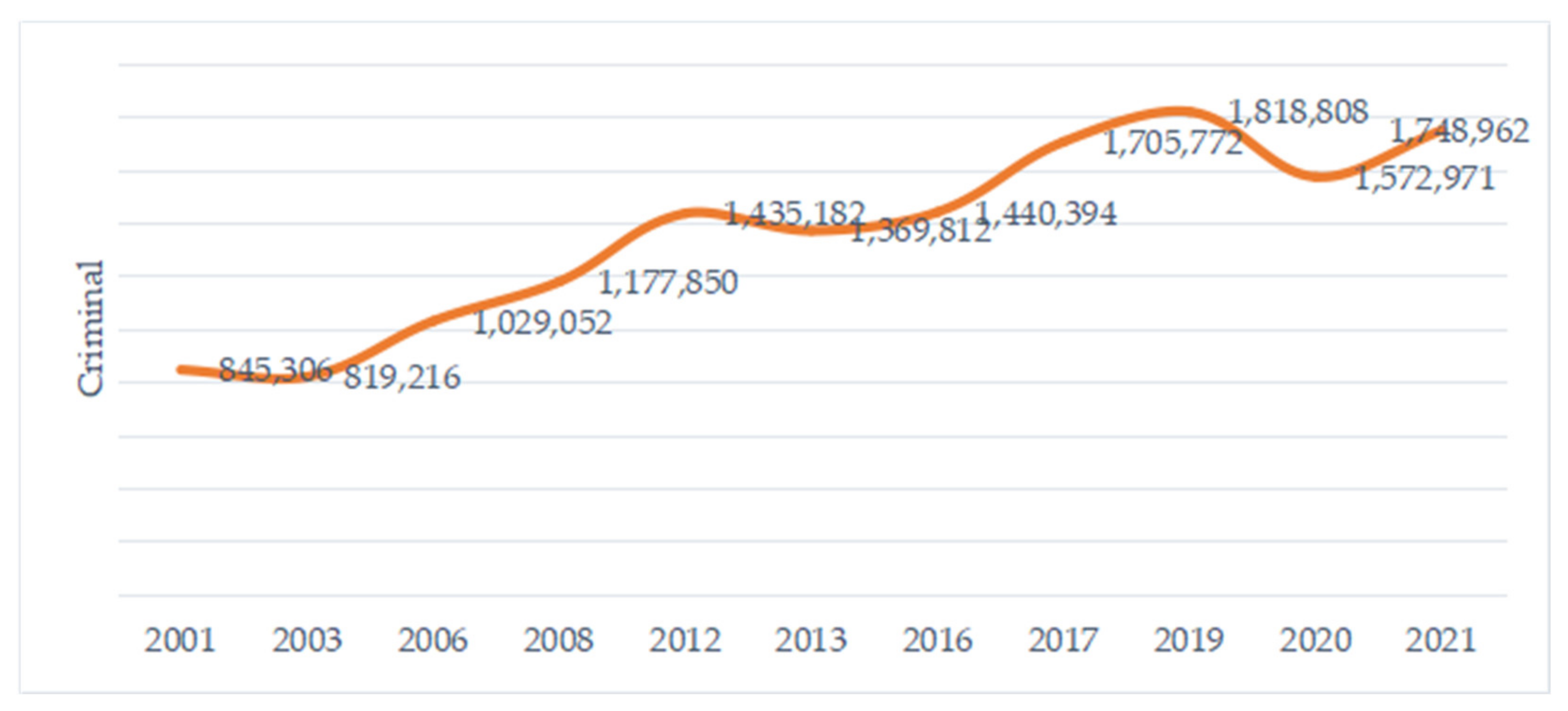
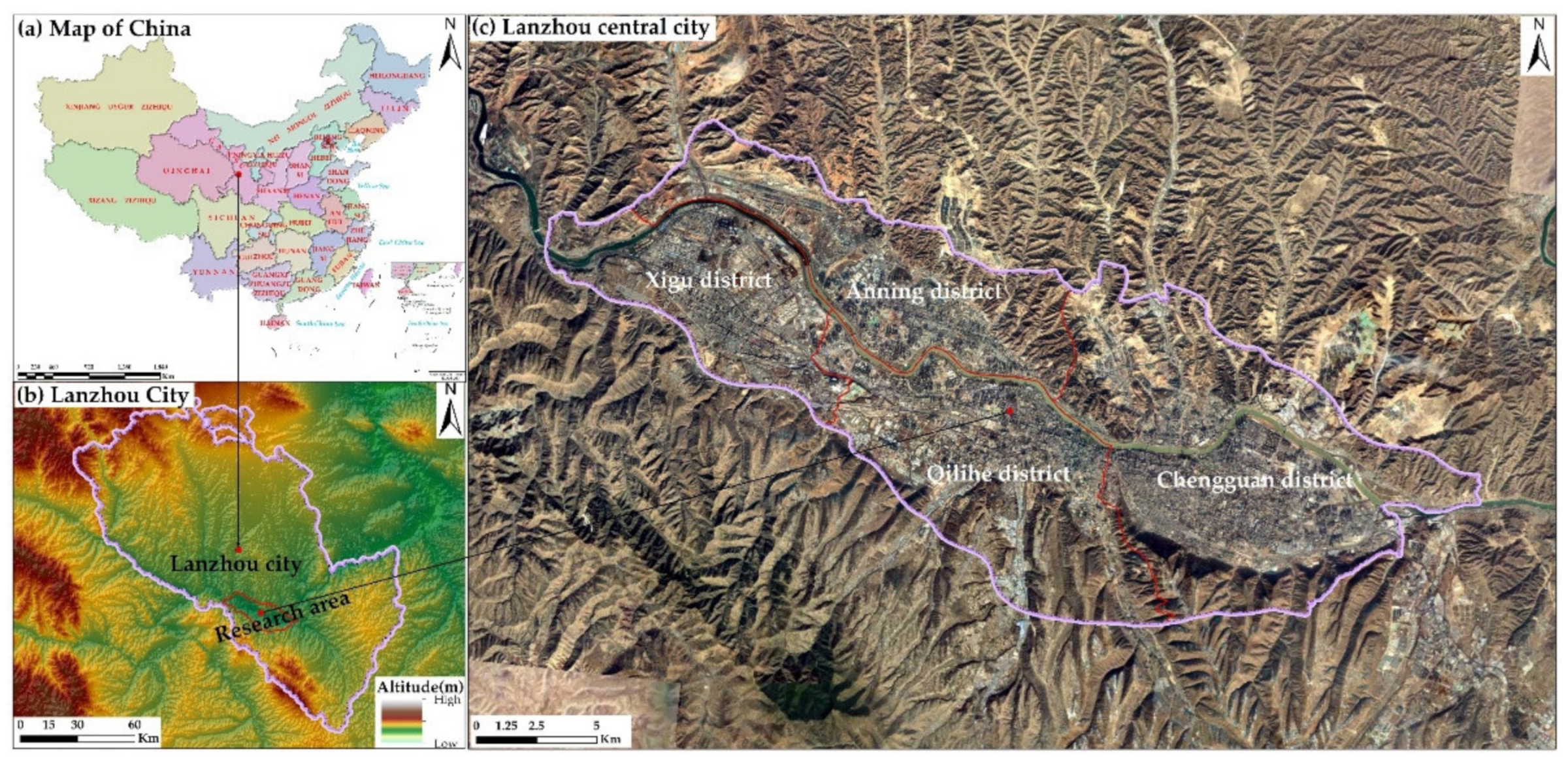


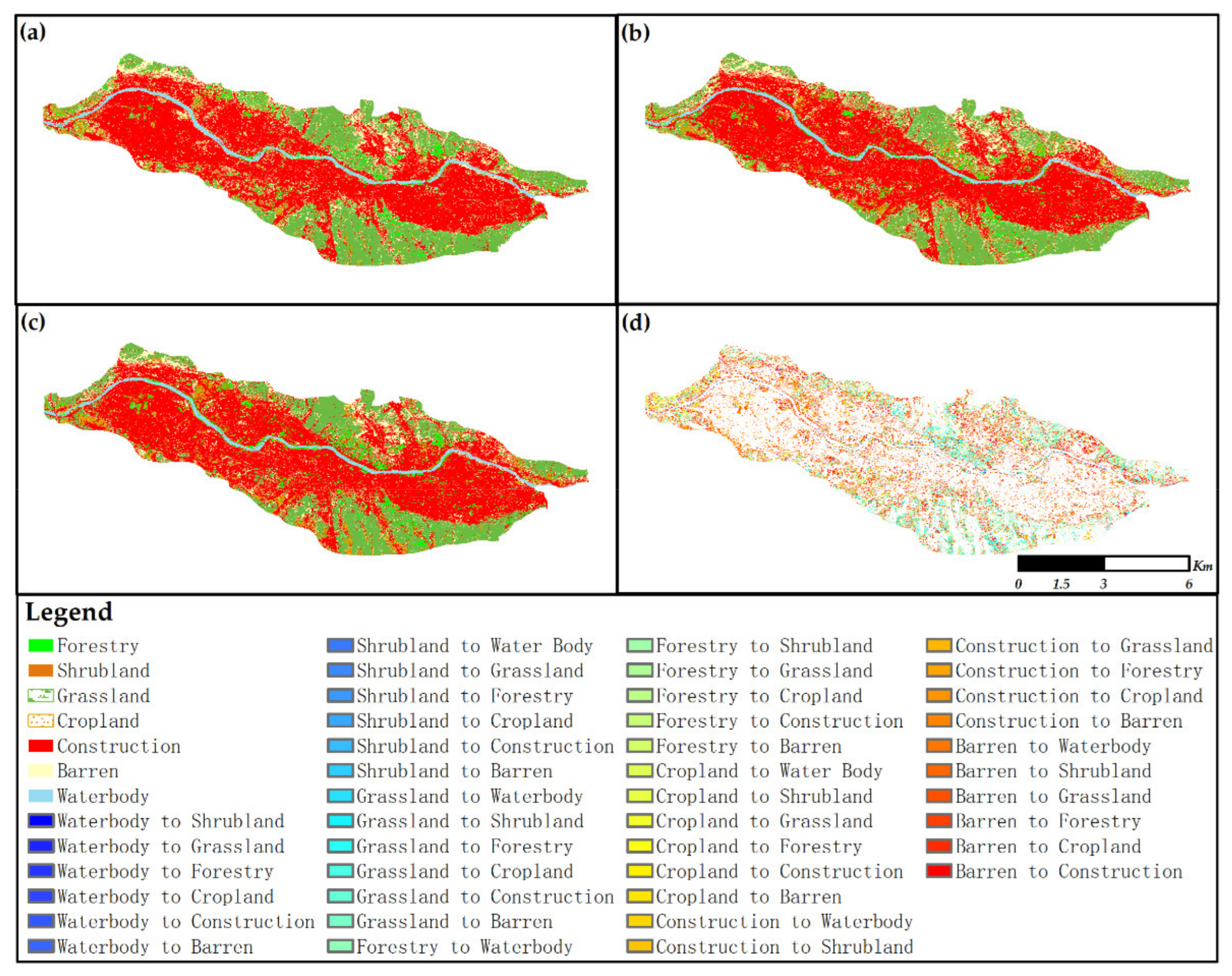
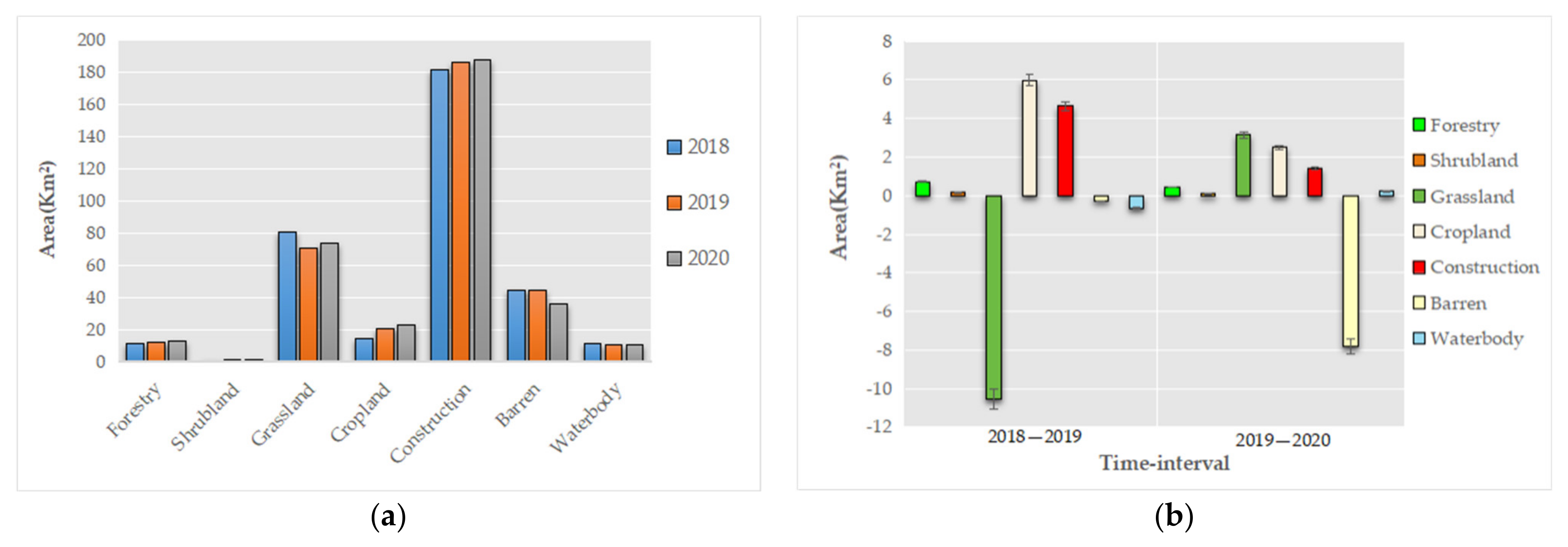
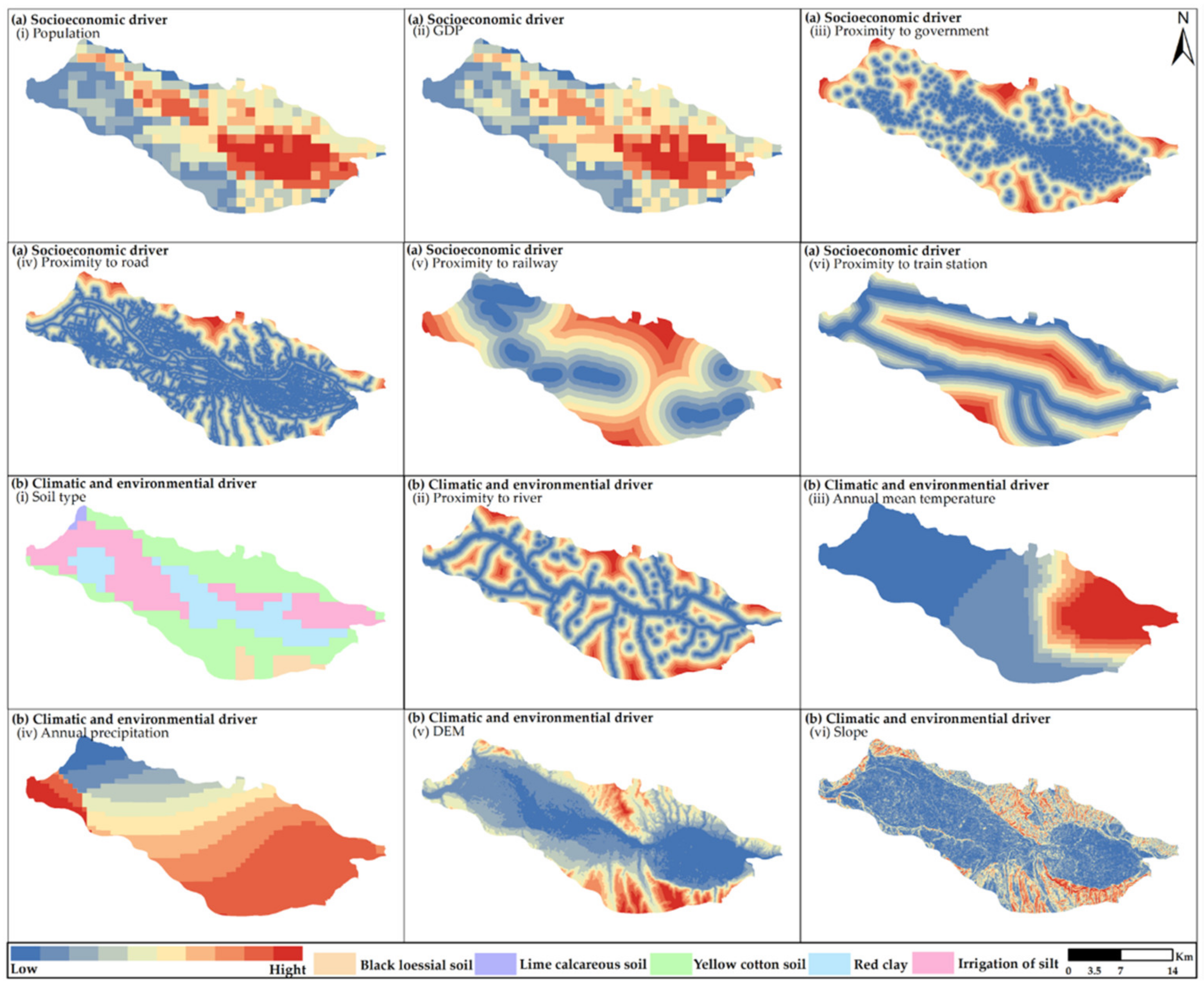



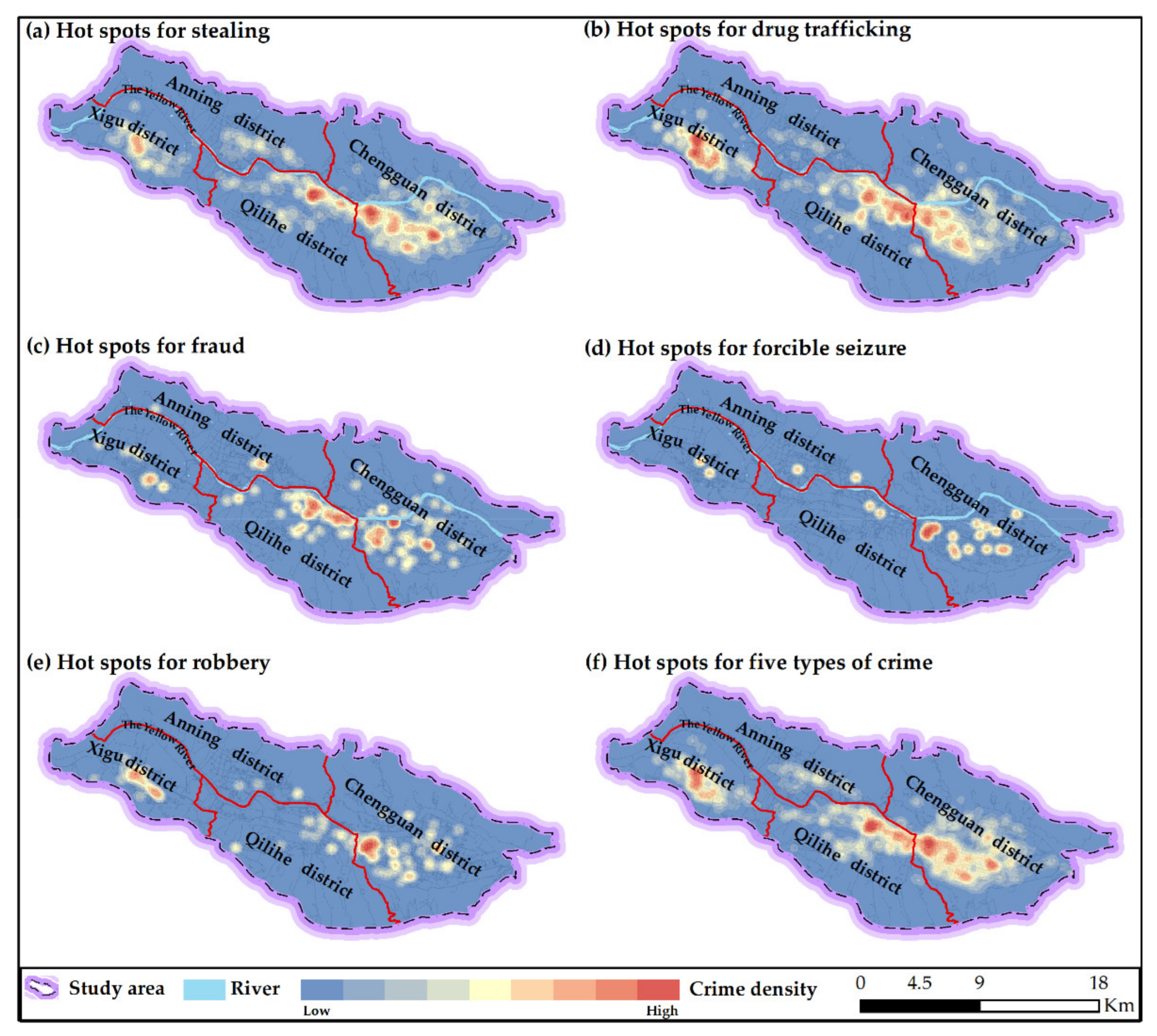
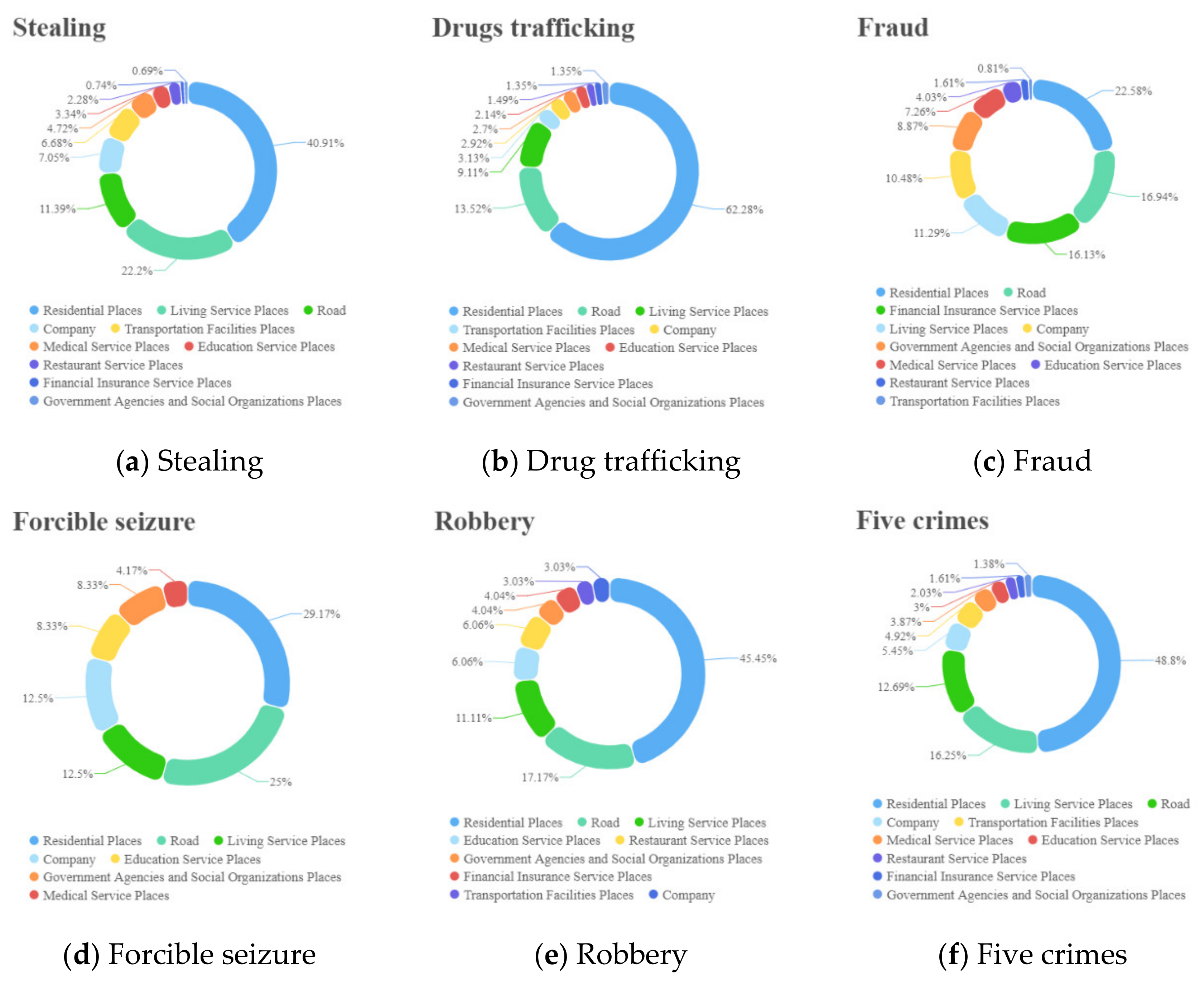
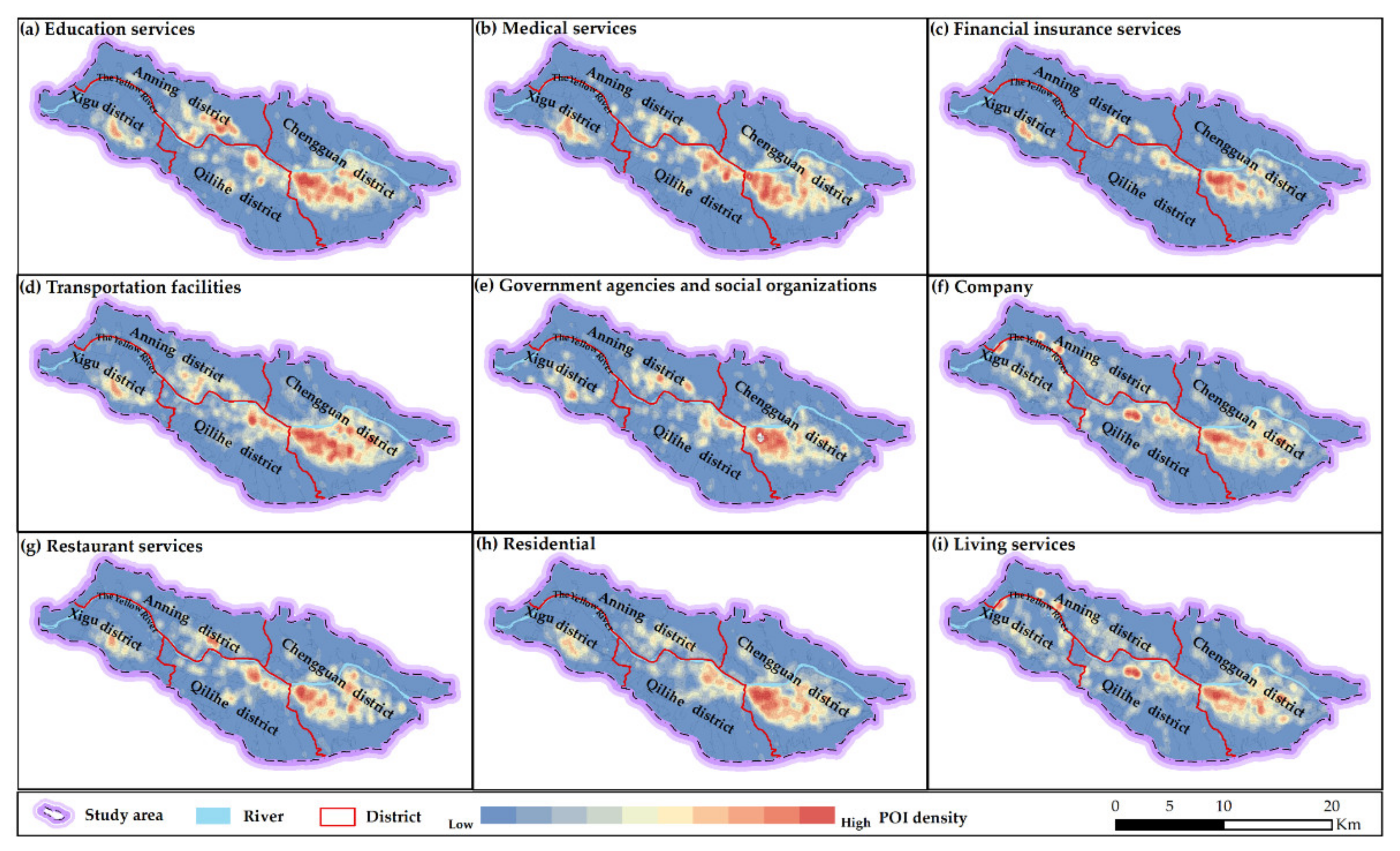
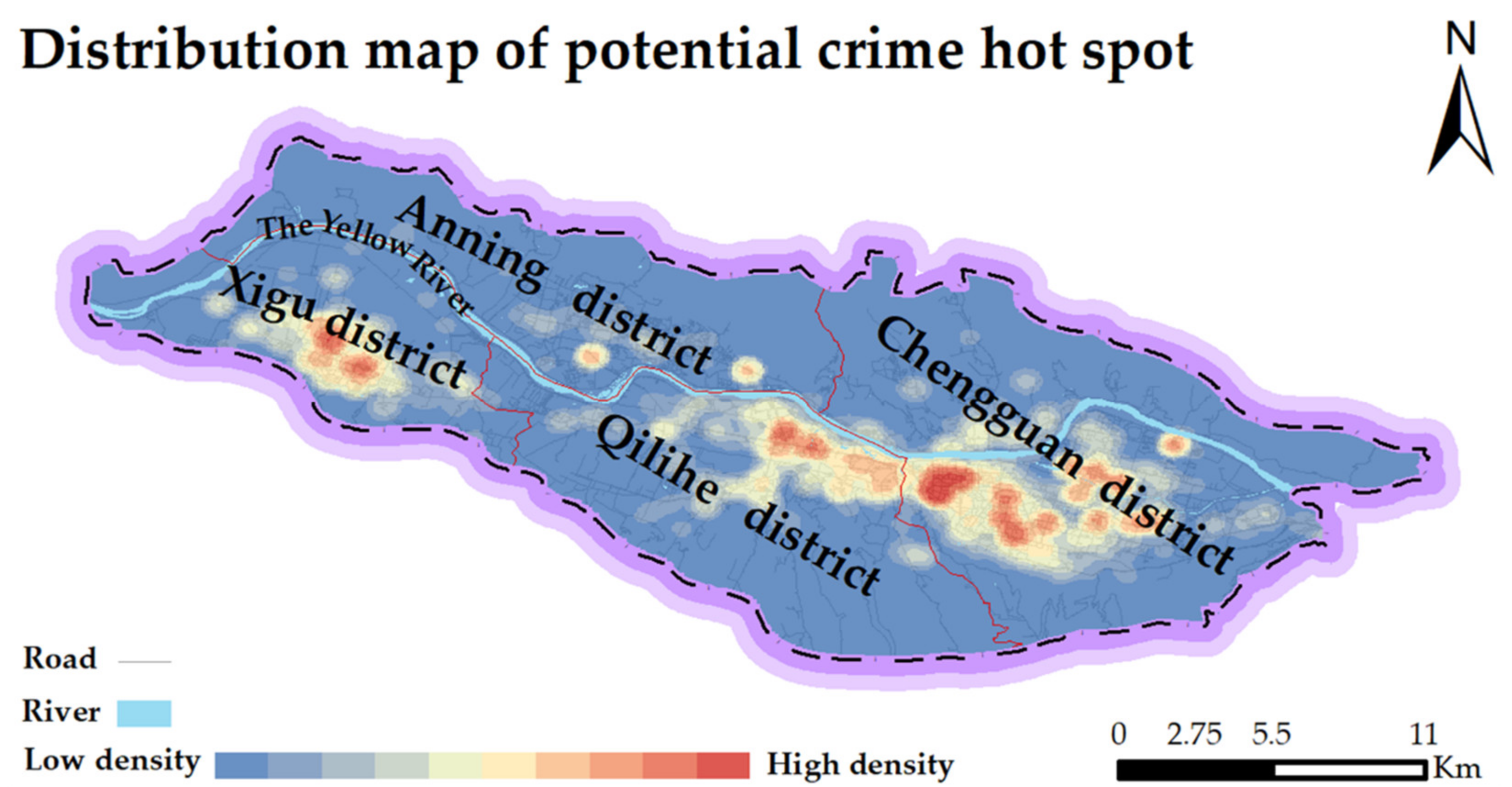
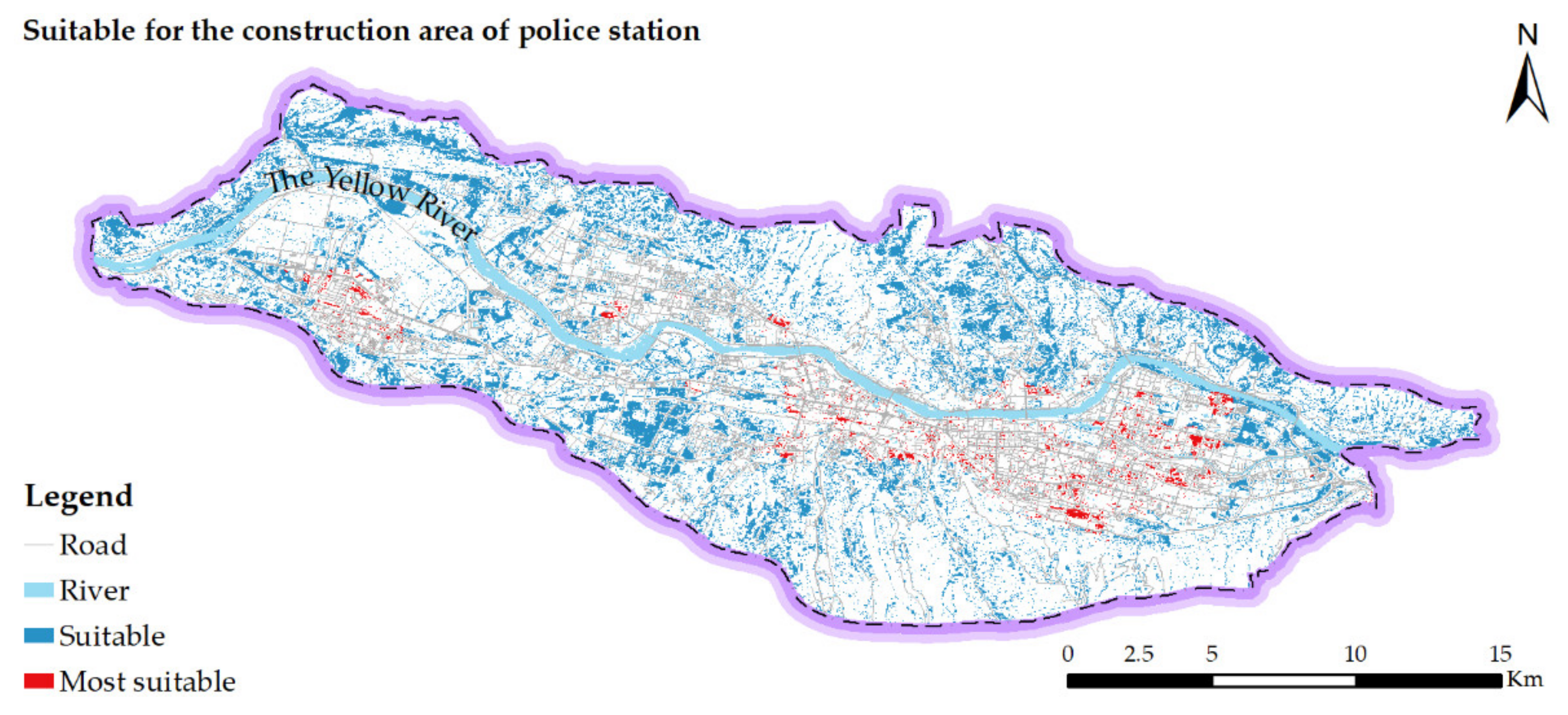
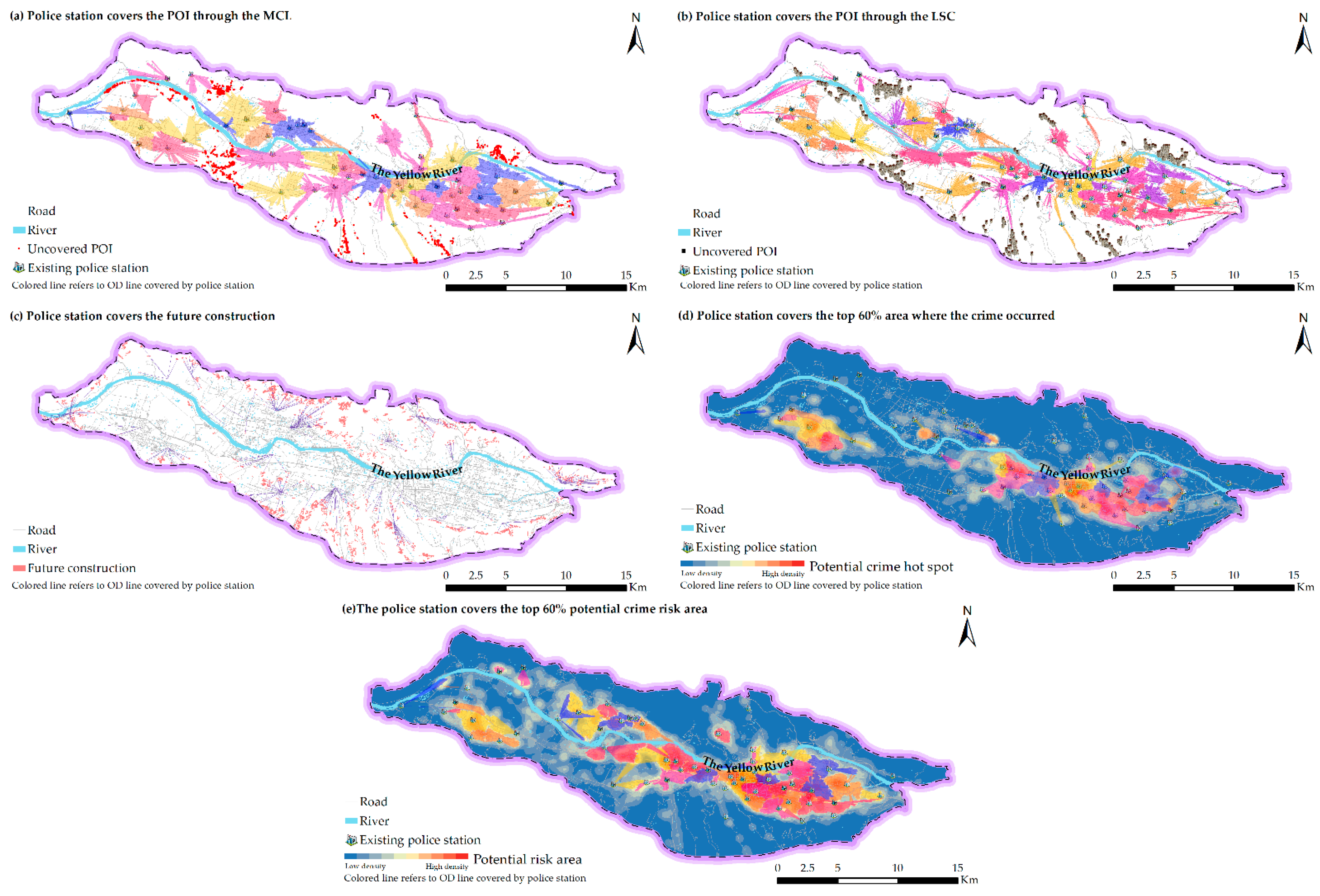


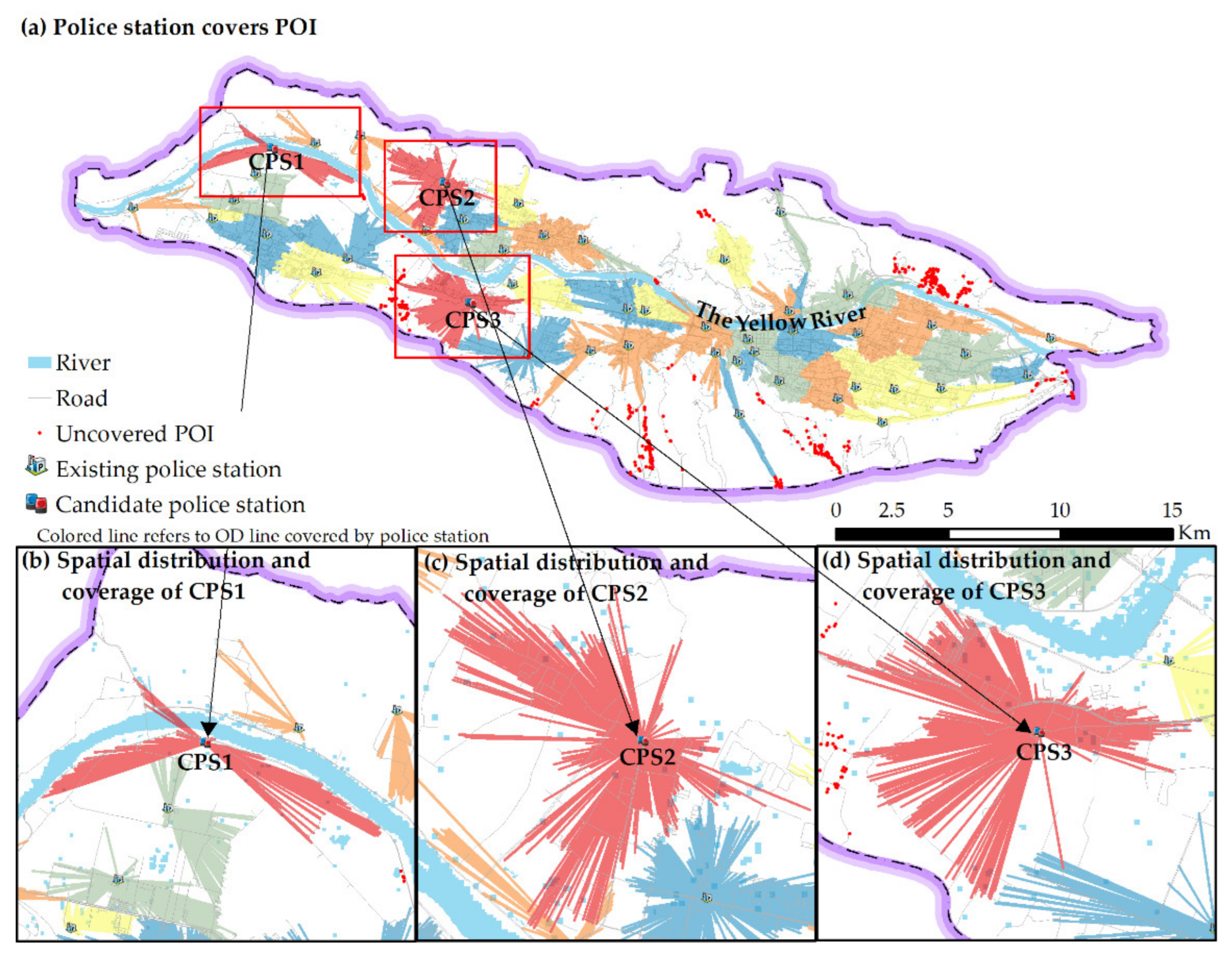
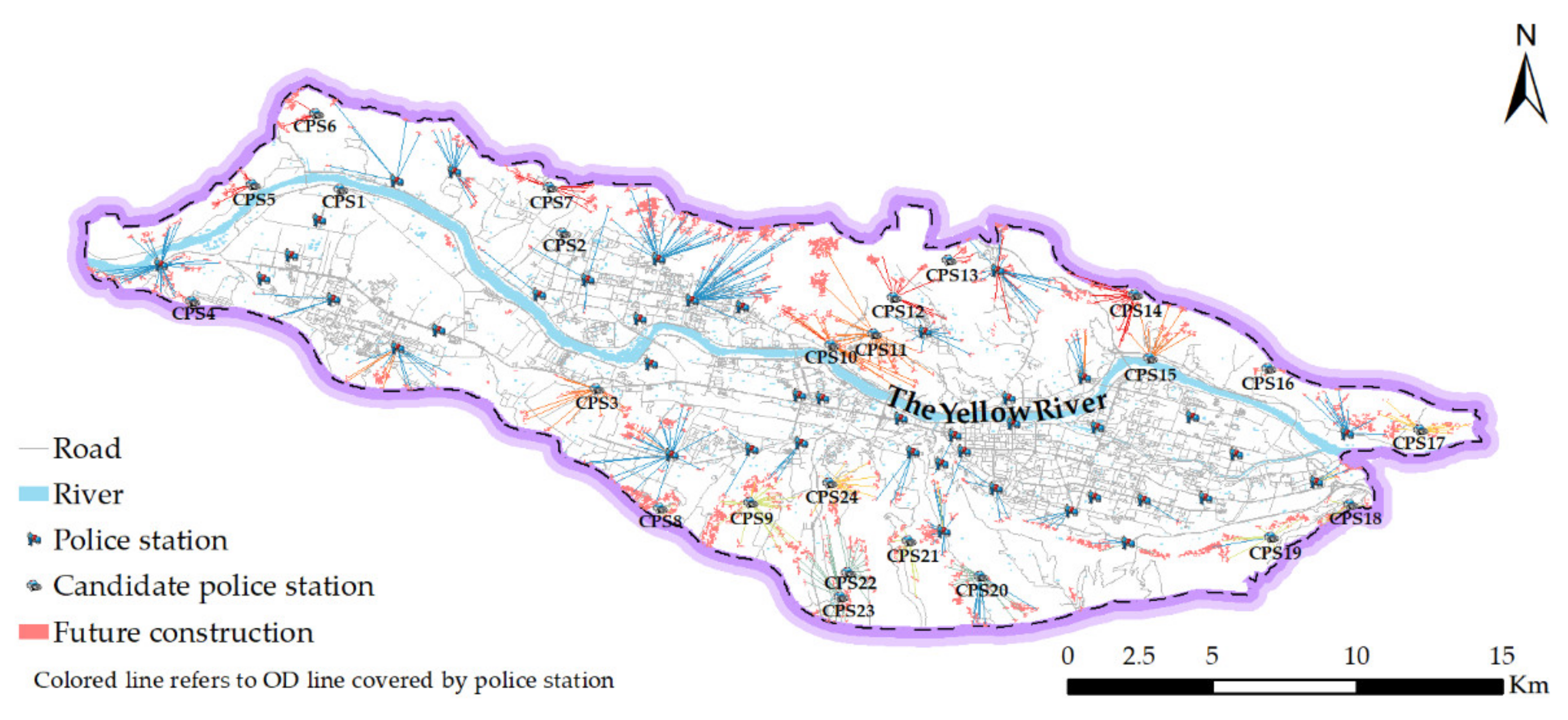
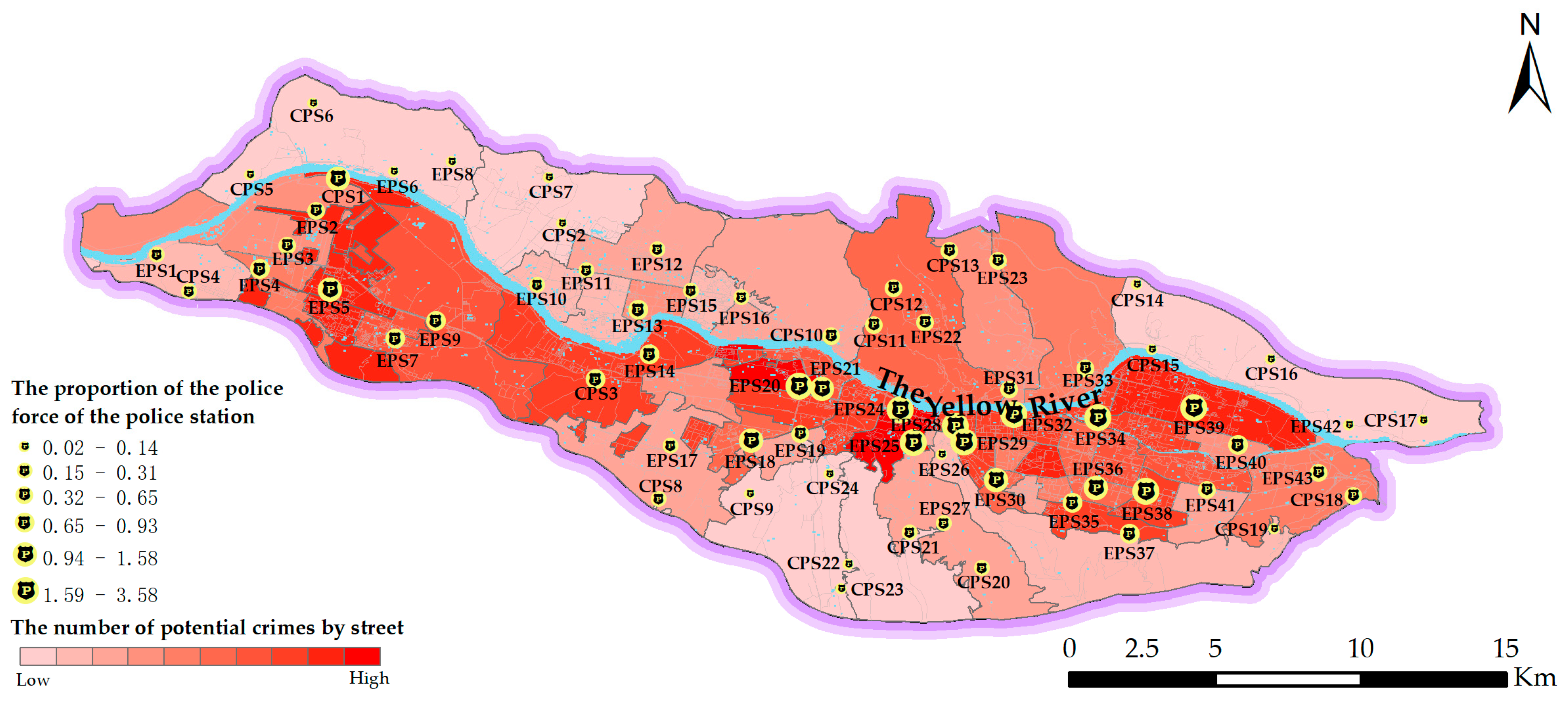

| Types | Abbreviation | Description |
|---|---|---|
| Forestry | FO | Trees in the landscape can be observed from the images. Parcels are planted with fruit trees or shrubs: single or mixed fruit species, fruit trees related to the surface of permanent grassland, etc. |
| Shrubland | SL | Shrub cover can be identified in the images. The texture is finer than the canopy but coarser than the grasslands, etc. |
| Grassland | GL | Grazing grassland and natural park, etc. |
| Cropland | CL | Rice cultivation, arable and tillage lands, greenhouse farming, etc. |
| Construction | CS | Urban and built-up areas, roads, etc. |
| Barren | BA | Bare soil, wastelands, exposed rock, etc. |
| Waterbody | WB | River, lake, pond, canal, dam, ditch, stream, weir, etc. |
| Main Class | Sub-Class | Year | Original Resolution | Data Resource |
|---|---|---|---|---|
| Land use | Land use | 2018–2020 | 30 m | GEE |
| Socioeconomic driver | Population | 2015 | 1000 m | http://www.geodoi.ac.cn/WebCn/Default.aspx, (accessed on 29 September 2021). |
| GDP | ||||
| Proximity to government | 2021 | 30 m | https://lbsyun.baidu.com/, (accessed on 29 September 2021). | |
| Proximity to road | 2021 | 30 m | OSM | |
| Proximity to railway | ||||
| Proximity to train station | ||||
| Climatic and environment driver | Soil type | 2015 | 1000 m | http://www.geodoi.ac.cn/WebCn/Default.aspx, (accessed on 29 September 2021). |
| Proximity to river | 2021 | 30 m | OSM | |
| Annual mean temperature | 1994–2018 | 30 m | https://www.esmap.org/re_mapping, (accessed on 11 June 2020). | |
| Annual precipitation | ||||
| DEM | 2016 | 30 m | NASA SRTM1 v3.0 | |
| Slope |
| Land Use | Forestry | Shrubland | Grassland | Cropland | Construction | Barren | Waterbody |
|---|---|---|---|---|---|---|---|
| Forestry | 1 | 0 | 0 | 0 | 0 | 0 | 0 |
| Shrubland | 1 | 1 | 1 | 1 | 1 | 1 | 1 |
| Grassland | 1 | 1 | 1 | 1 | 1 | 1 | 1 |
| Cropland | 0 | 0 | 0 | 1 | 0 | 0 | 0 |
| Construction | 0 | 1 | 1 | 0 | 1 | 1 | 0 |
| Barren | 1 | 1 | 1 | 1 | 1 | 1 | 1 |
| Waterbody | 0 | 0 | 0 | 0 | 0 | 0 | 1 |
| Numerical Scale | Definition (i with Respect to j) | Value | |
|---|---|---|---|
| aij | aji | ||
| 1 | Equal importance | 1 | 1 |
| 3 | Moderate importance | 3 | 1/3 |
| 5 | Strong importance | 5 | 1/5 |
| 7 | Very strong importance | 7 | 1/7 |
| 9 | Extreme importance | 9 | 1/9 |
| 2, 4, 6, 8 | Intermediate values | 2, 4, 6, 8 | 1/2, 1/4, 1/6, 1/8 |
| n | 1 | 2 | 3 | 4 | 5 | 6 | 7 | 8 | 9 | 10 |
|---|---|---|---|---|---|---|---|---|---|---|
| RI | 0 | 0 | 0.58 | 0.90 | 1.12 | 1.24 | 1.32 | 1.41 | 1.45 | 1.49 |
| Main Class | Subclasses |
|---|---|
| Company | Construction companies, factories, home appliance and electronics stores, pharmaceutical companies, mechanical services, etc. |
| Restaurant Services | Chinese restaurants, dessert shops, casual dining places, fast food restaurants, cold drink shops, coffee shops, tea houses, etc. |
| Residential | Residential homes, buildings, hotels, villages, apartments, travel agencies, bars, etc. |
| Living Services | Vegetable markets, shopping centers, pedestrian streets, temporary work agencies, post offices, theatres, etc. |
| Education Services | Elementary school, junior high school, high school, preschool, etc. |
| Financial Insurance Services | Banking, insurance, securities trading, etc. |
| Medical Services | Pharmacies, hospitals, clinics, service stations, etc. |
| Transportation Facilities | Parking stations, docks, parking lots, etc. |
| Government Agencies and Social Organizations | Sports bureaus, government bureaus, public security bureaus, highway bureaus, etc. |
| Maximize Coverage Location (MCL) | Minimize Facilities Coverage (LSC) | |
|---|---|---|
| Objective function | ||
| Subject to |
| Land Use Type | Points | Polygons | 2018 (km2) | 2019 (km2) | 2020 (km2) |
|---|---|---|---|---|---|
| Construction | 284 | 328 | 181.12 | 185.75 | 187.17 |
| Cropland | 133 | 35 | 14.45 | 20.43 | 22.92 |
| Barren | 276 | 87 | 44.26 | 43.98 | 36.17 |
| Forestry | 131 | 56 | 11.34 | 12.05 | 12.50 |
| Grassland | 247 | 106 | 80.86 | 70.31 | 73.46 |
| Shrubland | 6 | 2 | 0.05 | 0.20 | 0.28 |
| Waterbody | 110 | 25 | 10.92 | 10.28 | 10.49 |
| Overall accuracy (%) | — | — | 93.65 | 93.03 | 92.89 |
| Kappa accuracy (%) | — | — | 87.79 | 86.77 | 86.18 |
| Units: km2 | Construction | Cropland | Barren | Forestry | Grassland | Shrubland | Waterbody |
|---|---|---|---|---|---|---|---|
| Construction | — | +2.42 | −4.93 | +1.08 | −4.54 | +0.07 | −0.16 |
| Cropland | −2.39 | — | −2.39 | −0.68 | −2.83 | +0.03 | −0.19 |
| Barren | +4.90 | +2.40 | — | +1.16 | −0.35 | +0.05 | −0.04 |
| Forestry | −1.04 | +0.66 | −1.13 | — | +0.44 | +0.03 | −0.06 |
| Grassland | +4.49 | +2.83 | +0.35 | −0.45 | — | +0.10 | +0.03 |
| Shrubland | −0.05 | −0.03 | −0.03 | −0.02 | −0.08 | — | −0.01 |
| Waterbody | +0.16 | +0.19 | +0.04 | +0.07 | −0.04 | +0.01 | — |
| Losses | −26.08 | −9.86 | −31.75 | −7.40 | −24.95 | −0.00 | −2.23 |
| Gains | +32.13 | +18.33 | +23.66 | +8.56 | +17.55 | +0.23 | +1.80 |
| Crime | Moran’s Index | Z Score | p Value | |
|---|---|---|---|---|
| Stealing | 0.037155 | 27.873002 | 0 | Clustered |
| Drug trafficking | 0.031001 | 23.116256 | 0 | Clustered |
| Fraud | 0.003169 | 2.451706 | 0.014218 | Clustered |
| Forcible seizure | −0.000174 | 0.127155 | 0.898818 | Random |
| Robbery | 0.004627 | 3.512771 | 0.000443 | Clustered |
| Five types of crime | 0.044173 | 33.011379 | 0 | Clustered |
| Criteria | Weight | Sub-Criteria | Weight | Weight | Final Weight | |
|---|---|---|---|---|---|---|
| Potential crime hot spot | 64.8% | 64.8% | ||||
| Socioeconomic | 23.0% | Population | 20.4% | 4.7% | ||
| GDP | 20.4% | 4.7% | ||||
| Proximity to the existing police station | 8.5% | 2% | ||||
| Potential risk area | 50.7% | Education service areas | 8.5% | 1% | ||
| Medical service areas | 9.9% | 1.2% | ||||
| Financial insurance service areas | 3.8% | 0.4% | ||||
| Transportation facilitates | 14.8% | 1.7% | ||||
| Government agencies and social organization areas | 2.9% | 0.3% | ||||
| Companies | 11.8% | 1.4% | ||||
| Restaurant service areas | 5.3% | 0.6% | ||||
| Residential areas | 24.2% | 2.8% | ||||
| Living service areas | 18.8% | 2.2% | ||||
| Climate and environmental driver | 12.2% | DEM | 50% | 6.1% | ||
| Slope | 50% | 6.1% |
| PS | PP/% | HR/% | PS | PP/% | HR/% | PS | PP/% | HR/% | PS | PP/% | HR/% |
|---|---|---|---|---|---|---|---|---|---|---|---|
| EPS01 | 0.20 | 0.59 | EPS18 | 1.11 | 0.53 | EPS35 | 0.87 | 0.70 | CPS09 | 0.05 | 0.43 |
| EPS02 | 0.38 | 0.42 | EPS19 | 0.65 | 0.58 | EPS36 | 1.14 | 0.69 | CPS10 | 0.59 | 3.33 |
| EPS03 | 0.38 | 0.42 | EPS20 | 3.58 | 1.06 | EPS37 | 0.87 | 0.70 | CPS11 | 0.38 | 0.57 |
| EPS04 | 0.93 | 0.96 | EPS21 | 1.58 | 1.13 | EPS38 | 2.03 | 0.63 | CPS12 | 0.38 | 0.57 |
| EPS05 | 1.07 | 0.64 | EPS22 | 0.38 | 0.57 | EPS39 | 2.64 | 3.91 | CPS13 | 0.42 | 0.45 |
| EPS06 | 0.03 | 0.20 | EPS23 | 0.52 | 0.53 | EPS40 | 0.77 | 1.26 | CPS14 | 0.02 | 0.00 |
| EPS07 | 0.84 | 0.96 | EPS24 | 1.97 | 1.23 | EPS41 | 0.62 | 0.45 | CPS15 | 0.02 | 0.00 |
| EPS08 | 0.03 | 0.20 | EPS25 | 1.97 | 1.23 | EPS42 | 0.02 | 0.00 | CPS16 | 0.02 | 0.00 |
| EPS09 | 0.84 | 0.96 | EPS26 | 0.14 | 0.96 | EPS43 | 0.50 | 0.41 | CPS17 | 0.02 | 0.00 |
| EPS10 | 0.31 | 1.57 | EPS27 | 0.19 | 0.54 | CPS01 | 1.07 | 0.64 | CPS18 | 0.50 | 0.41 |
| EPS11 | 0.32 | 0.95 | EPS28 | 1.79 | 0.69 | CPS02 | 0.08 | 1.22 | CPS19 | 0.14 | 0.96 |
| EPS12 | 0.32 | 0.95 | EPS29 | 1.76 | 1.08 | CPS03 | 0.89 | 1.26 | CPS20 | 0.19 | 0.54 |
| EPS13 | 0.75 | 1.93 | EPS30 | 1.14 | 1.75 | CPS04 | 0.20 | 0.59 | CPS21 | 0.19 | 0.54 |
| EPS14 | 0.89 | 1.26 | EPS31 | 0.42 | 0.45 | CPS05 | 0.03 | 0.20 | CPS22 | 0.05 | 0.43 |
| EPS15 | 0.23 | 0.59 | EPS32 | 2.04 | 0.47 | CPS06 | 0.03 | 0.20 | CPS23 | 0.03 | 0.29 |
| EPS16 | 0.23 | 0.59 | EPS33 | 0.52 | 0.53 | CPS07 | 0.08 | 1.22 | CPS24 | 0.05 | 0.43 |
| EPS17 | 0.30 | 0.90 | EPS34 | 1.92 | 1.24 | CPS08 | 0.30 | 0.90 | — | — | — |
Publisher’s Note: MDPI stays neutral with regard to jurisdictional claims in published maps and institutional affiliations. |
© 2022 by the authors. Licensee MDPI, Basel, Switzerland. This article is an open access article distributed under the terms and conditions of the Creative Commons Attribution (CC BY) license (https://creativecommons.org/licenses/by/4.0/).
Share and Cite
Jiang, Y.; Guo, B.; Yan, Z. Multi-Criterion Spatial Optimization of Future Police Stations Based on Urban Expansion and Criminal Behavior Characteristics. ISPRS Int. J. Geo-Inf. 2022, 11, 384. https://doi.org/10.3390/ijgi11070384
Jiang Y, Guo B, Yan Z. Multi-Criterion Spatial Optimization of Future Police Stations Based on Urban Expansion and Criminal Behavior Characteristics. ISPRS International Journal of Geo-Information. 2022; 11(7):384. https://doi.org/10.3390/ijgi11070384
Chicago/Turabian StyleJiang, Yuncheng, Baoyu Guo, and Zhigang Yan. 2022. "Multi-Criterion Spatial Optimization of Future Police Stations Based on Urban Expansion and Criminal Behavior Characteristics" ISPRS International Journal of Geo-Information 11, no. 7: 384. https://doi.org/10.3390/ijgi11070384
APA StyleJiang, Y., Guo, B., & Yan, Z. (2022). Multi-Criterion Spatial Optimization of Future Police Stations Based on Urban Expansion and Criminal Behavior Characteristics. ISPRS International Journal of Geo-Information, 11(7), 384. https://doi.org/10.3390/ijgi11070384





